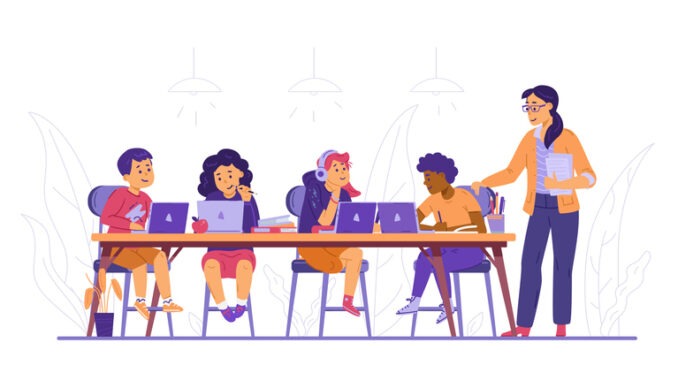
In January 2024, Education Executive reported on a groundbreaking study examining the impact of a pedagogy-first digital approach on various aspects of teaching and learning. In this article, lead researcher Dr Fiona Aubrey-Smith shares with us just one of the many insights from the report
As reported by Education Executive in January 2024, a ground-breaking new report has been published looking at the impact of a pedagogy-first digital approach on teaching and learning, attainment and progress, inclusion and equity, as well as drawing out the impact on recruitment and retention, teacher workload, financial efficiencies, environmental sustainability, attendance, behaviour, SEND, mobility, MAT growth and many other areas besides.
One of the many research findings in the report relates to the impact and implications of digitising everyday classroom tasks. For example, two parallel lessons working towards the same learning objective where teachers planned a lesson together and then in one classroom, the activities took place using traditional paper-based methods, and in the other classroom, the activities took place using digitised versions. The data suggests that digitising a task allowed the children to engage with it in less than 20% of the time, and to complete it in less than 13% of the time. For a 40-minute lesson, the time saving in this same lesson equated to 23% of the whole lesson. If extrapolated, that suggests that using traditional paper-based activities uses nearly ¼ of lesson time more than digital versions of the same thing which raises significant questions about lesson efficacy.
But the power of digital efficiencies is in what then becomes possible. For example, when a digitised version of a lesson was compared with a traditional paper-based version of the lesson, the nature of talk in the classroom changed. The most noticeable impact was that dialogue between teacher and learner shifted to higher-order questions with children talking about trends or patterns (e.g. what does this tell us about…), rather than transactional discussion (e.g. what happened next). The research suggests that this because time was spent focused on learning (e.g. cognitive and metacognitive processing) rather than administering (e.g. cutting and sticking, gluing).
There was an insightful finding relating to children’s self-esteem. As one child explained,
“When we get on to the next thing it kind of shows that what we are doing is important. If you have to wait for people to catch up all the time it’s sort of like the teacher is saying their learning matters but yours doesn’t. It’s a bit annoying if you are always waiting.”
So what can you take away from this and apply in your own context?
- Try timing a traditional classroom task, and a digitised version. Keep the example very small and very specific (e.g. a matching pairs activity). Importantly, time each stage – see table above – rather than the activity as a whole
- Consider where time is ‘lost’ in your classrooms – e.g. transitioning between tasks (which relates to routines and habits), troubleshooting (which relates to clarity of instruction)
- When comparing digital and non-digital versions of a task, listen carefully to what children and teachers talk about. Is their focus on the mechanics of what they are doing and how they are doing it (operationally focused), or why they are doing it and what learning they are extracting out of it (cognitive development)?
For the full research report:
Aubrey-Smith, F., (2023) Changing Learning. Changing Lives: What happens when EdTech becomes PedTech? PedTech impact report



Be the first to comment